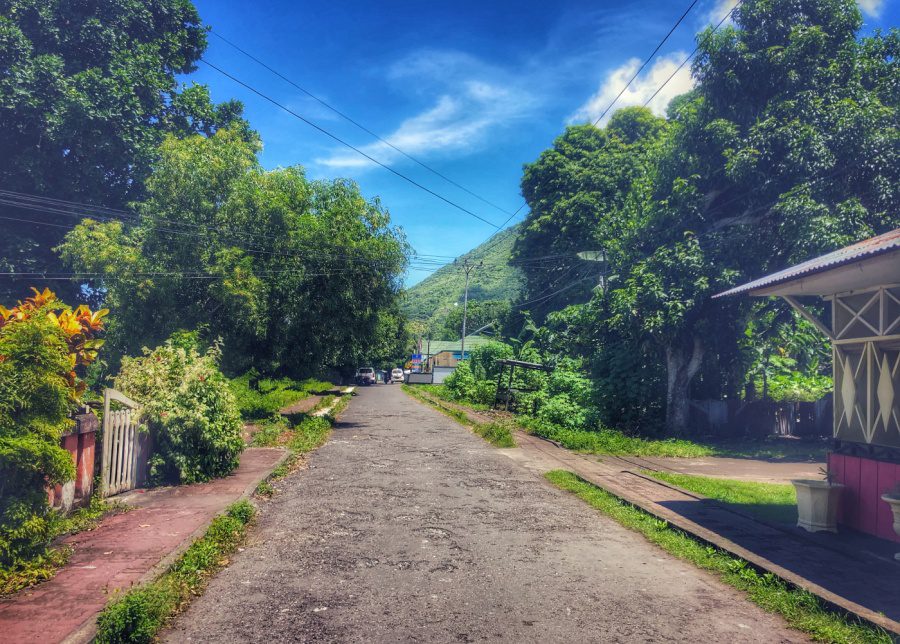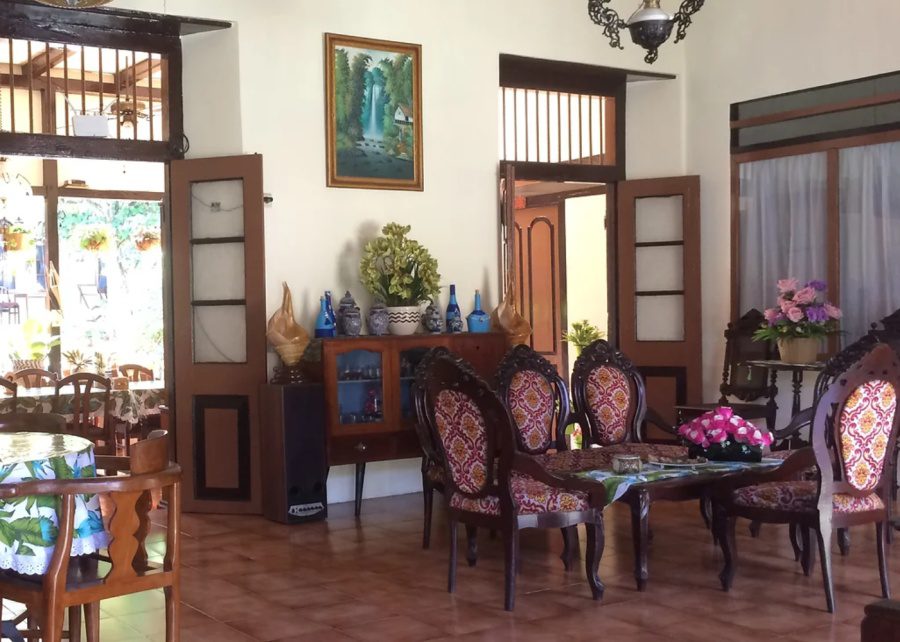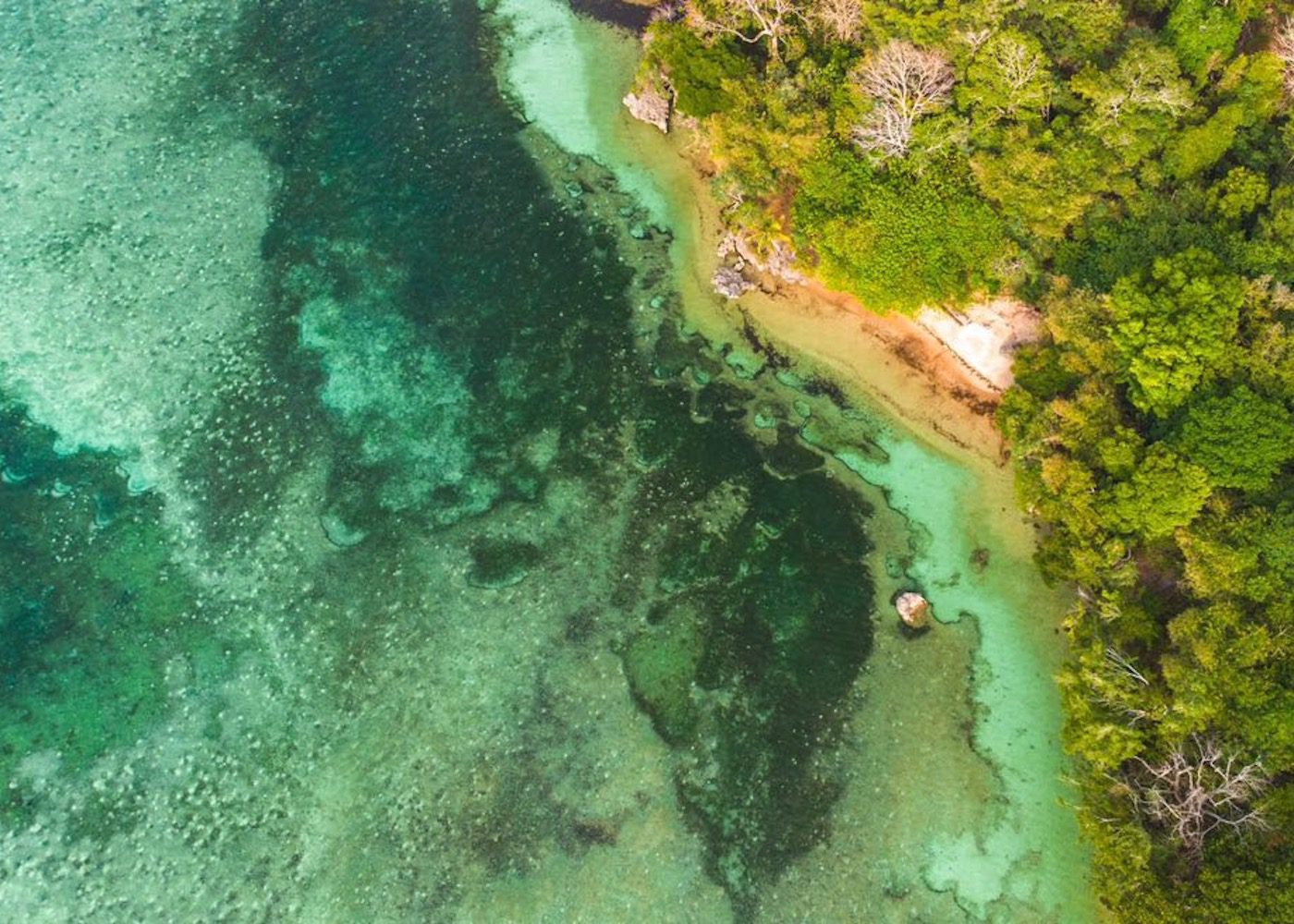
Escape to tranquil beaches without the crowds, and villages rich in culture with majestic volcanic backdrops... Welcome to the Banda Islands!
Imagine waking up on the ferry at sunrise, walking outside on the deck and seeing calm blue water, dolphins jumping alongside the small waves and the spice islands in the near distance. Travelling to this part of Indonesia truly feels like a dream.
So where are we? We are in the Banda Sea, southeast off the coast of Ambon, in the province of Maluku. This area is also part of the Malay Archipelago, or East Indies, consisting of over 17,000 islands of Indonesia and an estimated 7,000 islands of the Philippines. Reaching this particular group of ten volcanic islands (the Banda Islands) is a unique journey that will take you far away from the tourism hustle and bustle of Bali. As you arrive at the Banda Neira harbour, you will be pleasantly surprised at how much this tiny island offers… Let’s explore!
History of the Banda Islands
The Banda Islands, also referred to as the Spice Islands, were known for their exceptional production of mace, nutmeg, pepper and cloves. The islands played an essential role in the spice trades as a base for the highly profitable export of various spices worldwide. This almost-forgotten history is far more complicated than we can imagine. Yet today, the people of the Banda Islands are humble, welcoming, and willing to share the story of the spice trades with visitors. This history is why you will see Dutch colonial buildings, forts, a church, and other monuments scattered around Banda Neira. If you want to learn more, I recommend watching the documentary Banda: The Dark Forgotten Trail (2017).
Life in the Banda Islands: Religions & languages

The majority of the population in Maluku is Muslim or Christian. Over 52% of the population are Muslim (mainly in the north), while the remainder follow Christianity, Protestantism or Catholicism. In addition, a small percentage follow Buddhism, Hinduism and other folk religions. In Banda Neira, Islam is the main religion, so you will see several mosques on the island. Certain businesses may take a short break for Friday prayers.
Overall, people here dress modestly and are polite and respectful. Dive centres and hotels are very accommodating to tourists, but visitors should be mindful of covering their shoulders and refrain from wearing swimwear when walking around the main town.
There are many languages spoken in the Moluccas. The people of Banda, the Bandanese, speak Banda Malay. The dialect shares many loanwords from the Dutch and Portuguese languages. The local language in Banda Neira is also referred to as Bahasa Banda. Then there is the official language of Indonesia, Bahasa Indonesia, which has been used as the lingua franca for centuries. In Indonesia, an estimated 700 indigenous languages are used at home and in the community.
Communicating in English might be difficult outside the tourist areas, so it is always a good idea to learn a few basics in Bahasa Indonesia.
What to do in the Banda Islands
Explore the historical buildings, try the local cuisine, learn about the spice trade on a walking tour, or book your spot on a dive boat for the day. It is also a nice place to just sit back in a hammock and read a book. People here mostly get around on foot or by bicycle, so one could easily spend the afternoon strolling the neighbourhood and admiring the beauty of Banda.
1. Go scuba diving

Offering some of the best dive spots in Indonesia, you can be sure to enjoy the calm, clear waters around Banda. The still waters of the bay are an excellent place to discover scuba diving for the first time. For advanced divers, there are several courses on offer to expand your skills, plus a number of drift dives and night dives.
In the high season, divers can explore the incredible reefs of Batu Kapal, Lava Flow, Banda Besar, Pohon Miring, Pulau Karaka, and island hop a bit further out to Pulau Hatta, Pulau Ai, Pulau Rhun and Manukang. If you are chasing the thrill of seeing schools of hammerhead sharks, the second season between August – October will be your best chance to see them passing by in the cooler waters.
Year-round it is possible to see an abundance of diverse marine life, including turtles, scorpion fish, sea snakes, triggerfish, parrotfish, barracuda, reef sharks, and up to 300 species of coral. Estimated to reach an astonishing depth of over 7,000 metres, one of the deepest places on earth, the oceans of Banda are a dream dive destination.

The shallow reefs are also ideal for snorkellers and beginner divers. The dive spots are close to Banda Neira, the furthest being just a few hours away. Day trips typically include three dives with a dive guide or instructor at various dive spots depending on the current and weather conditions, and most include lunch, tea or coffee, and drinking water.
If you are looking for a recommended dive centre, consider booking your dives or diving courses with the Dive Blue Motion team. As a registered Green Fins Dive Centre, they prioritise the environment, ocean conservation and sustainability. Dive Blue Motion is also a part of Reefcheck Indonesia, the world’s largest coral reef conservation network.
2. Tour the Spice Island
Explore the neighbouring island of Banda Besar and visit Lonthoir Village to learn about the history of the spice trades. The tour will bring you to one of the largest nutmeg plantations. The local tour guides will be happy to show you the island’s best views, and your participation supports the community of Banda. Top tip: ask your guesthouse to book the Spice Island Tour when you arrive at your accommodation.
3. Hike up Mount Api

If you are looking for an adventure, a hike up an active volcano at sunrise is one way to get the adrenaline going. The last volcanic eruption was in 1988, and the event saw around 6,000 people evacuating to Ambon as the lava flowed from three craters into the sea.
Mount Api or Gunung Api is 640 metres high and takes about two hours to reach the summit depending on the conditions, and is best done with a local guide. Much of the track consists of black stone and is somewhat unstable, especially on the decline, so good hiking or walking shoes are recommended.
4. Visit Banda’s historical buildings
There are several historical sights and colonial buildings that tourists can visit during their stay in Banda Neira.
Rumah Budaya: A small museum in Banda Neira.
Muhammad Hatta’s House: An exile house of Indonesia’s first vice president from the 20th century
Instana Mini: An 1820s mansion where the colonial governors lived.
Fort Belgica: The classic star fort built in 1611 and one of the largest remaining forts in Indonesia.
Sun Tien Kong Chinese Temple: A 300 year-old Chinese temple.
Masjid Hatta-Syahrir: A public mosque built in 1921.
Dutch Reformed Church: Established in the 1600s, the original church was destroyed in an earthquake and was rebuilt in 1852.
Where to stay in the Banda Islands
Banda Neira offers accommodation for every type of traveller. From budget guesthouses to upscale suites with ocean views, you will find excellent value for money and welcoming staff. Even though Banda Neira is remote, most places offer guests air-conditioned rooms with hot running water, daily breakfasts and free Wi-Fi.
1. Baba Lagoon Hotel

This waterfront hotel is located close to the main town and offers 11 guest bedrooms with AC and ensuite bathrooms. The sunset views are some of the best on the island, and dive trips and courses can be arranged on-site with Dive Blue Motion.
Baba Lagoon Hotel, Jl Hotel Baba Lagoon, Nusantara Village, Banda Neira, e. [email protected]
2. Zahira Guesthouse

Located on the hill with sweeping views of Banda Bay, this family-owned guesthouse has large AC rooms and offers complimentary breakfast.
Zahira Guesthouse, Jl Mesjid Hatta Syahrir No. 67, Banda Neira, p. +62 812 9605 5698, e. [email protected]
3. Delfika 1 Guesthouse

A charming old Dutch mansion, this guesthouse has eight rooms to accommodate visitors looking for clean, comfortable AC or fan rooms.
Delfika 1 Guesthouse, Nusantara Village, Banda Neira, p. +62 910 21027 / +62 813 5572 8728, e. [email protected]
4. The Maulana Hotel

This beautiful colonial-style hotel was first established in 1989. Today it welcomes guests who wish to enjoy a little luxury on the island. Choose from a Garden, Balcony, Family or Presidential Suite.
The Maulana Hotel, Jl Pelabuhan, Nusantara Village, Banda Neira, p. +62 812 1221 6044, e. [email protected]
5. Nurasia Guesthouse
A popular place for travellers to hang out and enjoy ocean views, this family-run guesthouse has seven rooms. Long-term monthly stays are also welcome.
Nurasia Guesthouse, Nusantara Village, Banda Neira, e. [email protected]
Where to eat in the Banda Islands
In the main area of town, you will find a wet market selling fresh seafood, fruit and vegetables and several local restaurants serving simple but delicious food. Grilled fish, rice, noodles and vegetables are the main staples on the island.
1. Street food

Each night from around 5pm in the main street, you can find a variety of dishes that accompany steamed yellow rice (nasi kuning), including grilled or fried fish, different vegetables, rice noodles, fried tofu or tempeh, curry, fried chicken, eggs, and sambal. To order, choose the dishes you would like to eat, and the local seller will place them together on top of the rice and wrap it up in a paper bundle. This is a very common takeaway meal and costs between IDR 15,000 – 25,000 per serving. In addition to nasi kuning, you can find noodle soup (bakso), grilled fish (ikan bakar), grilled chicken satay (sate ayam), fried noodles (mie goreng) and fried rice (nasi goreng).
2. The cafe at Delfika 1 Guesthouse
Located in the Delfika 1 Guesthouse, the cafe serves a menu of international dishes and local Banda cuisine. Make sure you try the traditional fried eggplant with the native kenari nut sauce.
Delfika 1 Guesthouse, Nusantara Village, Banda Neira, p. +62 910 21027 / +62 813 5572 8728
3. Rumah Makan Nusantara
A local spot in the main town right next to Spice Island Cafe (below) serving a mostly Indonesian menu with a choice of different dishes, including grilled fish or chicken, fried rice, satay chicken, and stir-fried vegetables.
Rumah Makan Nusantara, Nusantara Village, Banda Neira, p. +62 822 3850 8356
4. Spice Island Cafe
A popular spot for fresh juice, smoothies and coffee located in the main town. Also on the menu is lime juice, teh tarik, iced tea and local nutmeg juice. A small menu is also available with lunch items such as gago-gado (vegetable salad), noodles, pancakes and french fries.
Spice Island Cafe, Nusantara Village, Banda Neira, p. +62 812 9605 5698, e. [email protected]
5. The restaurant at The Maulana Hotel

Enjoy a meal looking out over the sea at sunset, with live music and a relaxing atmosphere. The menu includes western and Indonesian dishes, and overall, it’s a great place to enjoy a special night out with friends and a drink.
The Maulana Hotel, Jl Pelabuhan, Nusantara Village, Banda Neira, p. +62 812 1221 6044, e. [email protected]
How to get to the Banda Islands?

There are several ways to reach Banda Neira. Still, it is important to know transportation is not always on schedule, and weather conditions can cause sudden delays and cancellations of flights and ferries. It is best to travel to this region on a relaxed schedule and be willing to adapt to the possible changes to your travel plans.
To get to the Banda Islands, first you will need to fly to Ambon (AMQ); once there, you have the following options:
Fly with Sam Air: This small 12-seater plane charter from Ambon to Banda Neira is the fastest option. However, it is not ideal for travellers with excess luggage as the allowance is 10kg per person. Additional luggage is charged per kilo and depends on the number of passengers travelling on the flight. Tickets cost around IDR 350,000.
Travel by sea with a Pelni ship: Nggapulu, Pangrango and Sabuk Nusantara ships all travel between Ambon and Banda Neira at different times of the month. Whilst the local Pelni ships are the slowest mode of transport (between 8 – 16 hours), they offer a direct connection that is both reliable and affordable. A ticket will cost about IDR 110,000 for an economy seat purchased at the local ticket office or via the online ticket reservation. To upgrade to a cabin, board the ship early, talk to the crew, and negotiate the price. It’s worth it for the overnight trip.
Travel on a ferry: Bahtera Nusantara 02 is the newest mode of transport with modern facilities and the option to book a private cabin for the overnight trip. Tickets start at IDR 145,000 for a seat and go up to IDR 600,000 for a bunk bed (limited availability).
When is the best time to visit the Banda Islands?

The best time to visit the Banda Islands is during the two peak dry seasons. Season one is from March to April, and season two is from September to December. Expect hot, humid, tropical weather during the peak seasons and days of heavy rain on the off-seasons. Whichever season you choose, don’t forget to pack the essentials:
- Lightweight and breathable clothing which cover the shoulders and the knees
- Rain jacket
- Sun protection
- Day bag for boat trips, hiking, trips, etc
- Swimsuit and rash guard
- Personal snorkel gear (scuba gear can be hired at the dive centres)
- Comfortable shoes
- Reusable water bottle and shopping bag (minimise the single-use plastic waste)
- Medication and basic first aid kit, as medical care is limited once you depart Ambon
- Mosquito repellant
- Sarong
Travel sustainably
Remote islands face a significant challenge when it comes to the safe disposal of waste and the recycling of single-use plastic. Unfortunately, much of this ends up in the ocean, and plastic continuously threatens marine life. If you visit the Banda Islands, remember to bring your reusable travel essentials and refuse single-use plastic as much as possible. Find out more about this issue here at Travel For Change Collective.
Luminocean offers a variety of programmes that are focused on education, marine conservation and the environment. International students from around the world travel to the Banda Islands to participate in Marine Ecology Courses and undertake internships, all to help reduce our footprints and travel sustainably.
Love this guide to the Banda Islands? Check out this guide to Kuta Lombok too!

